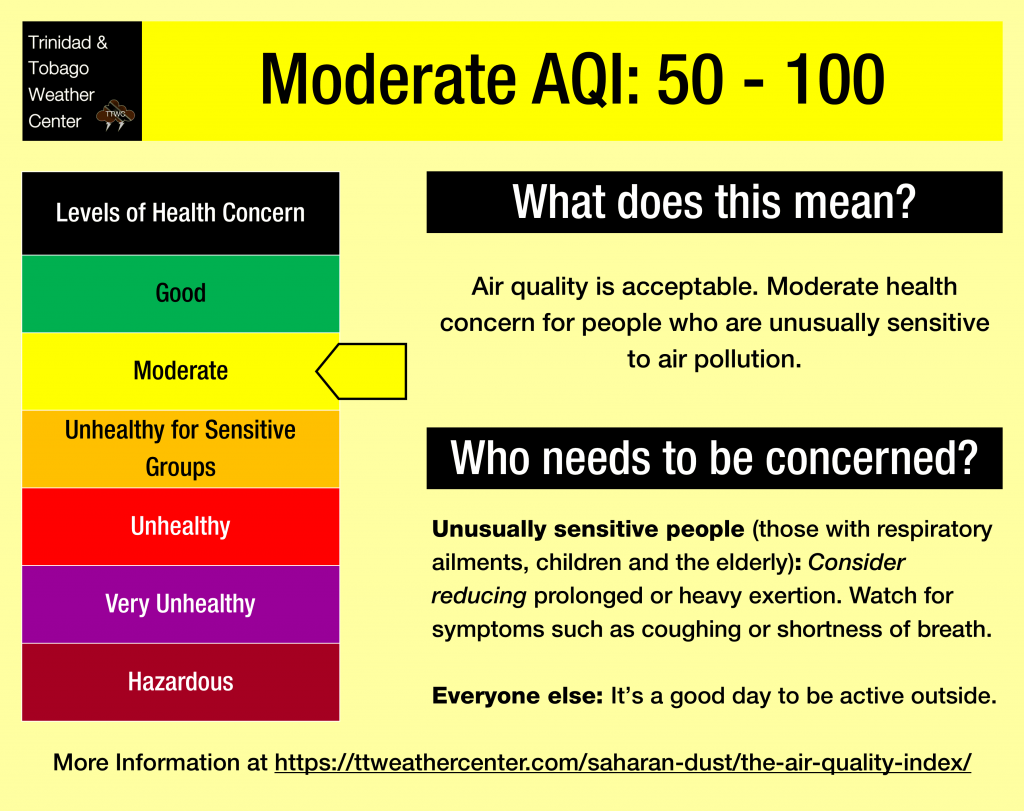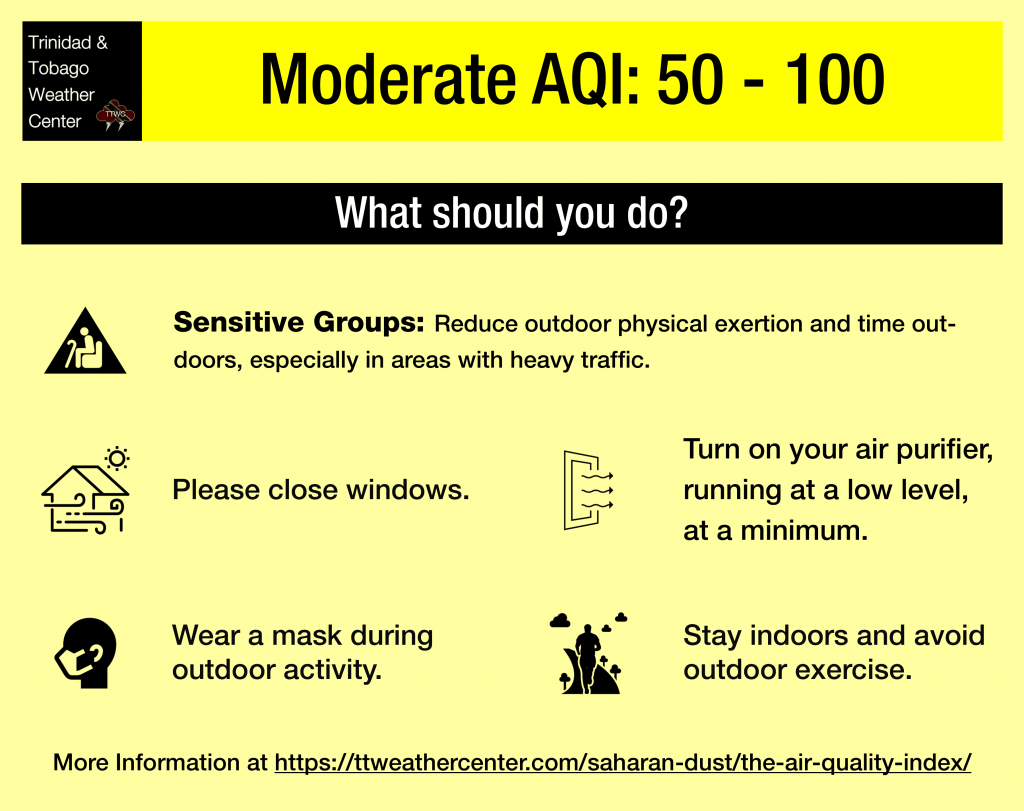Over the next ten days, Saharan Dust levels are forecast to fluctuate, increasing generally after the passages of tropical waves. However, due to the proximity of the Intertropical Convergence Zone to T&T, higher dust concentrations are forecast to remain north of the country.
What you need to know
— Saharan Dust Surges: An increased concentration of Saharan Dust is moving across T&T from Monday night (August 26th) through Thursday (August 29th), with another dust surge forecast to arrive across T&T by late Sunday night (September 1st) through Monday morning (September 2nd).
— Impacts: Air quality is forecast to remain good to moderate throughout the forecast period.
— What Should You Do: In times of unhealthy air quality, everyone should take the necessary precautions. Throughout the forecast period, sensitive groups are advised to take the necessary precautions, particularly during high traffic and in the vicinity of fires.
Current AQI Levels Across T&T

As of 11:00 PM Monday, August 26th, 2024, the official air quality monitoring stations from the Environmental Management Agency (EMA) at San Fernando, Arima, Point Lisas, and Toco all report moderate air quality, while Signal Hill and Beetham are not currently transmitting PM2.5 or PM10 data.
Unofficial air quality monitoring stations at Longdenville, St. Augustine, and Woodbrook are reporting moderate air quality.
These measurements are based on PM2.5 (particulates the size of 2.5 micrometers and smaller, usually associated with increases in Saharan Dust, vehicle exhaust, and smoke) and PM10 particulates.
Outside of rainfall activity, visibility has remained at 10 kilometers at the A.N.R. Robinson International Airport at Crown Point, Tobago, and the Piarco International Airport, Trinidad, over the last 24 hours.
Saharan Dust Forecast For T&T

Tuesday (August 27th) through Thursday (August 29th): Mild to moderate concentrations of Saharan Dust with air quality initially at moderate levels, improving to good as the week progresses.
Friday (August 29th) through Sunday (September 1st): Little to no Saharan Dust forecast across the country with generally good air quality.
Late Sunday (September 1st) through Wednesday (September 4th): Generally mild to moderate concentrations of Saharan Dust across T&T and the Lesser Antilles, with higher dust levels north of T&T. Air quality levels generally at good to moderate levels.
What does this mean for you?
Elevated concentrations of Saharan Dust periodically over the next seven to ten days are likely to bring air quality to moderate levels, chiefly affecting the most sensitive groups of the population. The general public is not required to take action.


We’re in a period where the Intertropical Convergence Zone, tropical waves, and occasional tropical cyclones may shield Trinidad and Tobago from the Saharan Dust events. While tropical waves are notable in moving dust across the Atlantic and the Eastern Caribbean, these periodic tropical waves also improve air quality.
The concentration of the dust that follows the wave depends on its strength as it moves off the West African Coast. This is because of stronger thunderstorms across Central Africa. As strong winds move downward and outward from these thunderstorms, the wind kicks up dust as it moves across parts of the Saharan Desert and transports it into the upper atmosphere. This “plume” of dust follows the axis of the wave as it progresses westward into the Atlantic.
Dust that makes it into the upper levels of the atmosphere can then get transported across the Atlantic Ocean. The plumes of dust eventually affect the Eastern Caribbean.
Larger, more concentrated plumes of Saharan dust begin in April and continue through November.











